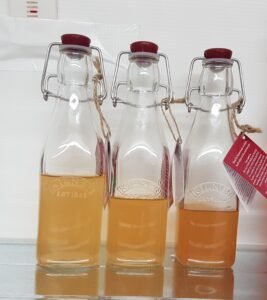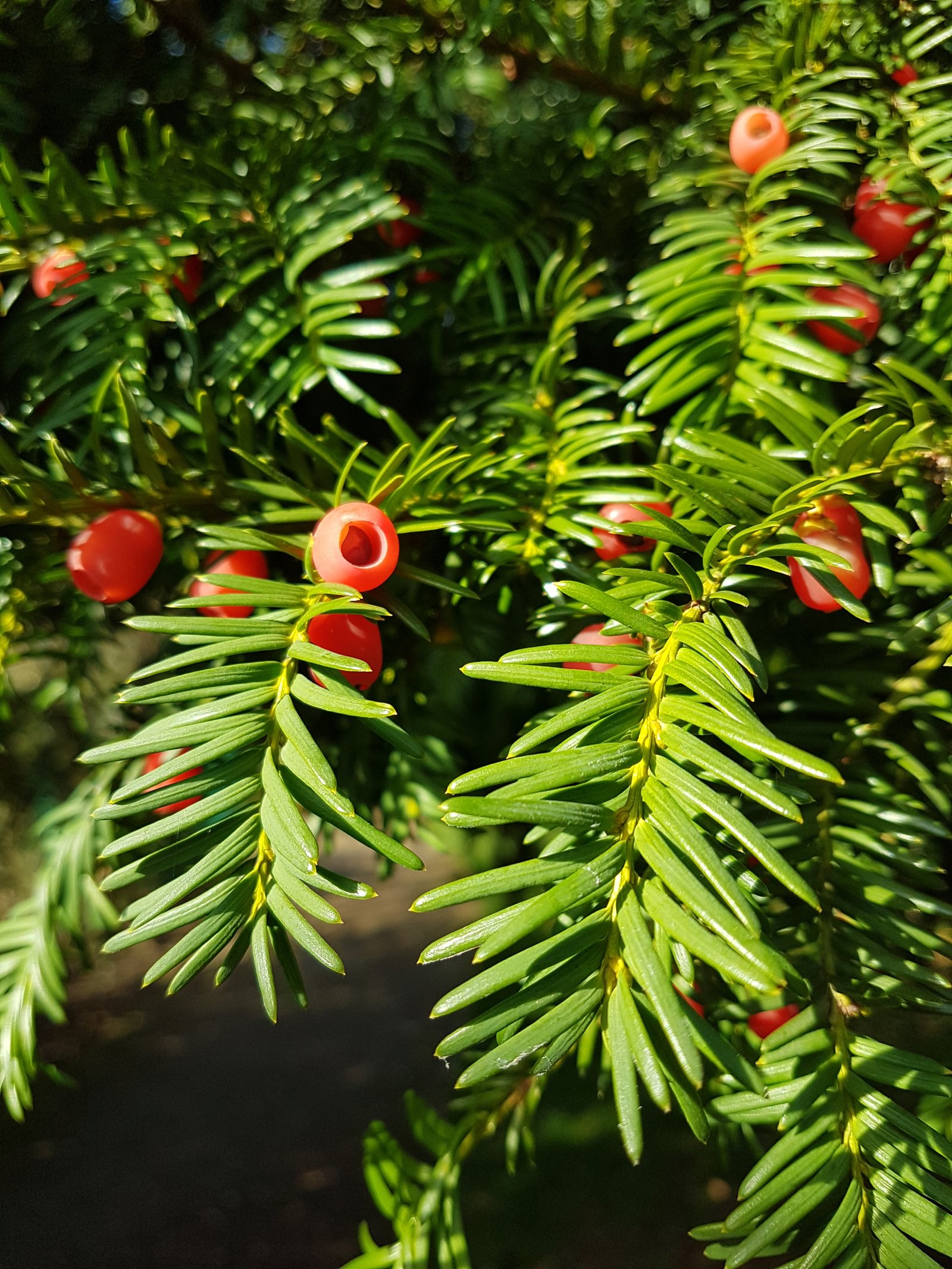So, we all know (or should know) that every part of the Yew tree is highly toxic to humans. When I say highly toxic, what I mean is that a very small amount can kill you. All parts contain taxin, a complex of alkaloids which are rapidly absorbed.
If you are poisoned by it, sometimes there are no symptoms, followed by death within a few hours. Where there are symptoms, they include trembling, staggering, coldness, weak pulse and collapse.
So what’s the good news?
Now that I’ve scared the living daylights out of you, there is one part that is not toxic. See those pretty little red berries, the red flesh is not toxic, and is also quite nice and sweet tasting; However, the hard, dark-coloured seeds inside, have probably the highest concentration of toxins of the whole tree. It is said that if unbroken, the seeds will pass through you without being digested and without causing harm.
I’m not sure it’s worth the risk, personally. However, I have been known to pick a few and spit the seeds out. The flesh is really quite nice (although I have heard some people compare the texture to snot – but I couldn’t possibly comment).
I’m assuming that it’s for for safety’s sake that there are no recipes for yew berry flesh, or even many instructions to tell you the safe way of eating them. After all, I could easily imagine someone seeing other people eating them and assuming that they’re completely safe, followed shortly afterwards by a trip to the hospital, or the morgue!
Time to make some yew liqueurs
That said, I decided that I would have a play with the flavours and some spirits to see if anything gave good results. Maybe some kind of yew liqueur?
The first step is to separate the flesh from the poisonous seeds. I tried to freeze them first to make it easier, but they didn’t freeze very well, so it was a quite disgusting manual job. The squeezed flesh went quite sticky.

So finally, I split the berry flesh into three portions and put them into some clean, sterilized Kilner-type jars. Over each, I then poured filtered white rum, filtered gin, and filtered vodka. Then I left them to sit and infuse (hopefully), giving them a helpful little shake each time I passed by.

The results…
So, after infusing for 2 weeks now, so it was time for a little try. At this point, the spirits had started to sweeten slightly, but not much change to colour or flavour.
After 4 weeks, things had moved on somewhat, so I strained and bottled the infusions.

Now you can see that not only have they taken on slightly different colours across the different spirits, but also I’ve ended up with slightly different amounts of end product, despite the fact that they started with the same volume of berries and spirits.
The judgement
First of all, they are all quite nice. The berries have imparted a slight sweetness, some of their stickiness has come through and made the spirits thicker and smoother, and there’s a very subtle citrus berry flavour.
However, one stands out above the rest. The Gin infusion seems to have worked very well. It’s nice to drink on its own, and if we hadn’t drunk it all it would probably go quite well in a cocktail. Maybe I’ll make it again this year, but try to save some for cocktail experiments, or make some more!

